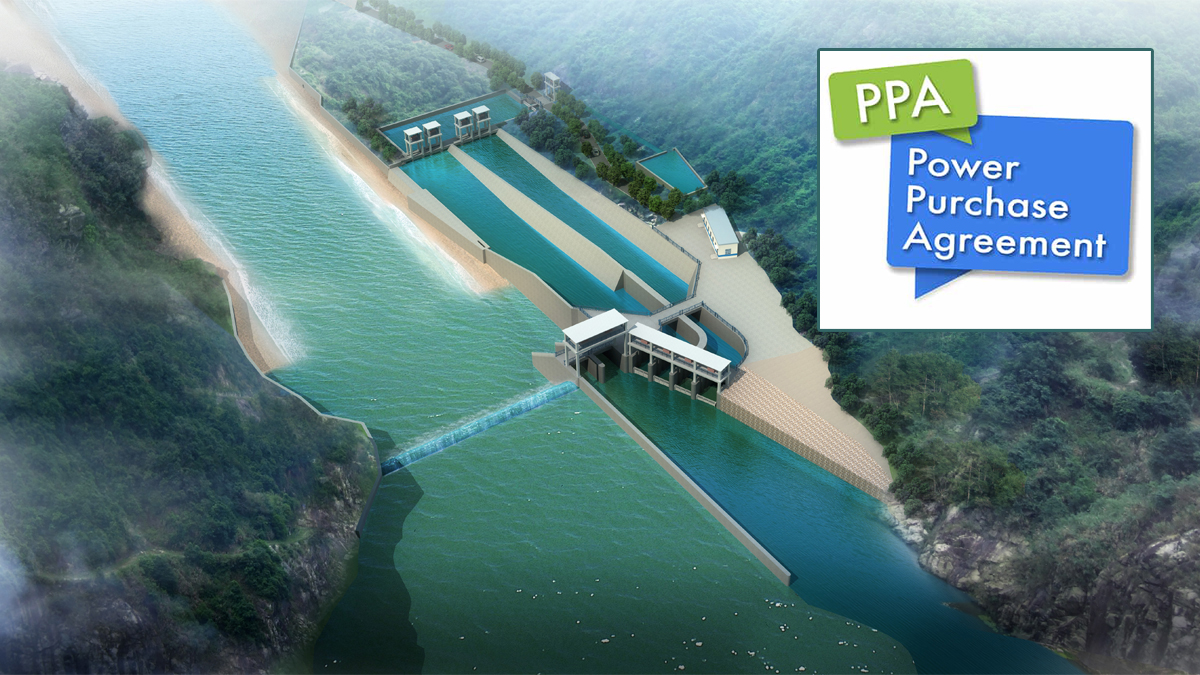
Kathmandu; While a number of hydropower projects have been struggling to conclude their financial closure, a government committee has recommended canceling the power purchase agreement (PPA) of all types of hydropower projects above 100 MW that have failed to find financial resources for the past three years.
A study report on the ‘policy arrangement regarding electricity purchase and sale agreement’ has recommended the government to annul the PPA of all such projects failing to maintain financial closure in the stipulated time interval. Six months ago, the government formed a committee led by Sandeep Kumar Dev, joint secretary of the Ministry of Energy, Water Resources and Irrigation.

The report has recommended delegating authority to the Nepal Electricity Authority (NEA) to cancel the PPA if the financial closure of all the projects above 100 MW is not completed within three years from the date of completion of the PPA. In the case of projects with a capacity of less than 100 MW, the deadline has been fixed at a maximum of two years.
Along with the cancellation of the PPA, the government panel has also recommended to confiscate the bank guarantee maintained by such a project. Likewise, the hydropower developers concerned will also face cancellation of survey/production permits issued for such projects.

According to the panel report, out of 7,757 MW hydropower projects that had signed the PPA, 33.94 percent have failed to finalize the financial closure. The committee has also recommended giving priority to the PPA of hydropower projects promoted by the Government of Nepal, subsidiaries of the NEA and companies owned by the government.
The report has recommended increasing the PPA quota of run-of-river (ROR) and partial reservoir (P-ROR) hydropower projects by up to 35 percent. Given the provision is implemented on the line, a new PPA of 3,937 MW projects will have to be done. The report has revised the provision of minimum one hour peaking to two hours in case of P-ROR projects.
Similarly, the mandatory provision that the total energy produced in winter must reach 30 percent has been abolished and a new provision has been proposed in which the period of winter and drought is counted as six months each. It is mentioned that the maximum probability of the project (Percentage Of Exceedance flow) will be considered as the basis for the implementation of the Q40 provision while conducting the PPA.
In 2018, the government issued a white-paper for the energy sector and set a target of producing 15,000 MW of electricity in 10 years. The government has adopted a policy to do PPA abiding in the same quota. The committee has now recommended raising this quota by 35 percent to make it 20,250 MW. Accordingly, the committee has recommended adding a 5,250 MW quota towards ROR, P-ROR, reservoir and solar.
PPA of ROR projects to reach 9,000 MW
If the said provision (35 percent increase) of the study panel is implemented, it seems that the maximum limit of ROR projects will reach 9112.50 MW. It seems that about 4,000 quotas will be added in the P-ROR projects alone. As of now, the PPA limit of these projects is 6,750 MW and it has almost been completed. Towards P-ROR, the previously set limit of 4,500 MW will be increased to 6,075 MW by an additional 1,575 MW.
According to the report, it seems that the ROR and P-ROR project's overall PPA will stand at 2,362.5 MW and 1,575 MW, respectively, making a cumulative of 3,937.50 MW. However, the report mentions that while PPA is done with private sector projects, it will be done based on market demand and export potential.
The 50-year duration of the reservoir project
Based on the recommendation of the committee, the period of the production permit for the reservoir and pump storage project has been fixed at 45 years. However, if there is an uncontrollable situation and there is a hindrance in the construction of the power project, the permit period will be extended by another up to five years. This provision is also included in the new Electricity Act which is now under consideration.
While conducting PPA of reservoir and pump storage projects, the estimated cost of the project, credit sources and interest rate, process of interest payment on the loans and subsidy received for construction and operation, among others, will be considered. Increasing PPA limit of ROR and P-ROR project has shrunk the quota towards the reservoirs. However, this provision is based on the white paper issued by the Ministry of Energy, Water Resources and Irrigation on May 8, 2018; therefore it cannot be considered a complete rule in this regard.